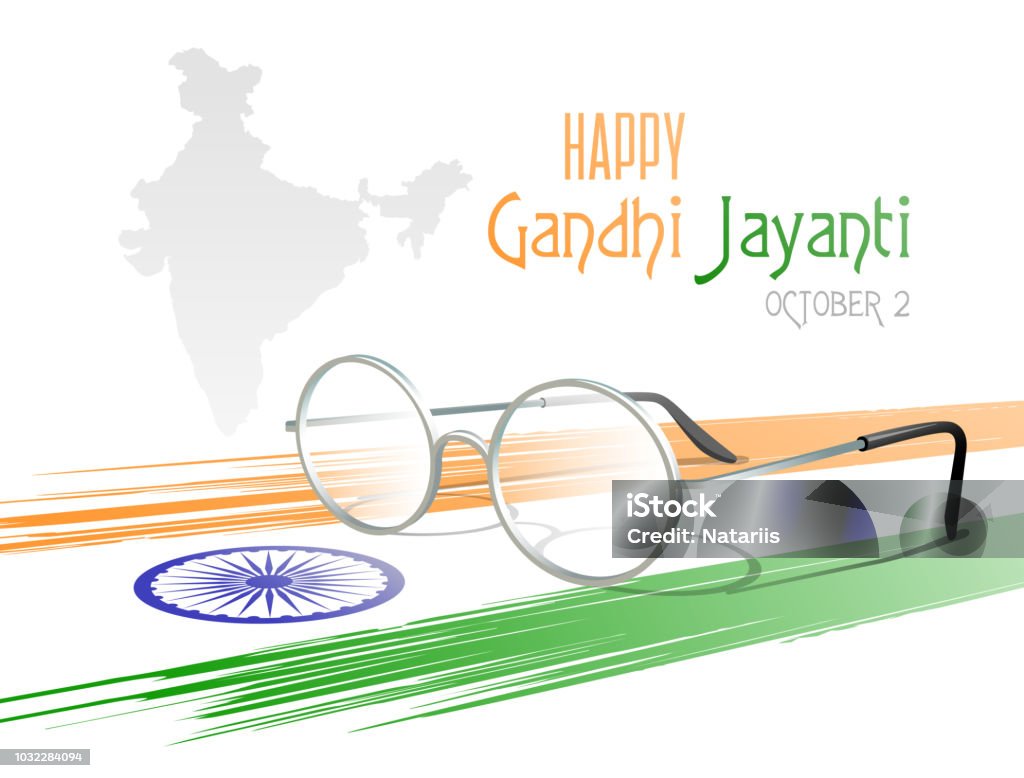LOOKING INTO PROMISES OF RUSA khagendra kumar
- Post By PoliticIndia.com on
- 2013-10-02 23:56:08
INTRODUCTION
India has now become a major player in the global knowledge economy. A large pool of qualified manpower that is fed by its higher education system has played significant role in it. It is now widely accepted that higher education has been critical to India's emergence in the global knowledge economy. Yet, it is believed that various problems are plaguing the Indian higher education system. The major problems are related to accessibility, quality and equity.
Over past sixty-five years, India has covered a long distance on the path of expanding the institutional capacity in higher education. In1950, the country had just 25 university-level institutions; this figure has gone up to 620, about 25 times increase. These include central universities (44), state universities (298), deemed universities (130) and private universities (148). The figures within brackets show the latest available UGC data on their number. The growth of degree colleges has been even larger, over 30-times by February 2012. The number of colleges has gone up from 700 to 27,053. (UGC, 2012) Out of these, 7,178 colleges are recognized by the UGC under Section 2(f) of the UGC Act and 5,936 colleges are eligible to receive development grants under Section 12(B) of the UGC Act. (UGC, 2011)
According to a UGC statistics, estimated 169.75 lakh of students are enrolled in higher education in 2011.The current level of GER in India stands at a figure of 12.4 and which is quite low compared to world average of 23.2- 36.5 for developing countries and 45 for developed countries. According to an all India survey on higher education by MHRD, Govt. of India the current GER is 18.8. In addition to low access to higher education in general, there are wide disparities between various social groups. The GERs for SCs, STs and OBCs are far below the average GER. There is also a wide gender disparity; GER for males is 20.9% while that for females is only 16.5%. There are also differences in quality of institutions and enrollments between rural and urban areas and between developed states and not so developed ones.
India plans to raise the GER from current level to 30 by the year 2020 (UGC Report, 2011). If India were to increase that figure of 18.8% to 30%, then it would need another 800 to one thousand universities and over 40,000 colleges in the next 10 years. Addressing a higher education summit organized by the Federation of Indian Chambers of Commerce and Industry (FICCI), former HRD Minister Kapil Sibal said "We will need 800 new universities and 40,000 new colleges to meet the aim of 30 percent GER (gross enrolment ratio) by 2020. Government alone cannot meet this aim" (Gupta, 2012)
The Rashtriya Uchchatar Siksha Abhiyan (RUSA) is a new strategic intervention for the improvement of access, equity and quality in Indian higher education, that focuses on state universities and state institutions though a special centrally sponsored scheme in a mission mode. RUSA document proposes a new centrally sponsored scheme for higher education which will spread over two plan periods (XIIth and XIIIth) and will focus on state higher educational institutions. There are 316 states public universities and 13,024 colleges, that can be covered under RUSA. The funding will be provided in the (Center : State) ratio of 90:10 for North-Eastern States & J&K, 75:25 for Other Special Category States (Sikkim, Himachal Pradesh and Uttarakhand) and 65:35 for Other States and UTs. Funding will be available to private government-aided institutions also, subject to their meeting certain pre-conditions, for permitted activities based on laid down norms and parameters.
SALIET FEATURES OF RUSA
RUSA can prove to be a boon for the poor states which are unable to implement the updated modern infrastructure and other essential items for up- gradation of higher education systems due to shortage of fund. It is based on key principles of performance-based funding, incentivizing well performing institutions and decision making through clearly defined norms, which will establish and rely upon a management information system to gather the essential information from institutions. RUSA will aim to provide greater autonomy to universities as well as colleges and have a sharper focus on equity-based development and improvement in teaching-learning quality and research.
Higher education needs to be viewed as a long-term social investment for the promotion of economic growth, cultural development, social cohesion, equity and justice. The globalization era has necessitated inculcation of competitive spirit at all levels. This can be achieved only by bringing quality of higher standards to every sphere of work. Therefore, the quality of higher education has become a major concern today. An important element in ensuring quality and excellence in Higher Education is the need for adequate number of good faculty in Institutions of Higher Education. Moreover, underpaid teachers under the nomenclature of Part Time Lecturers have been utilised in colleges and universities to make up the shortfall in the number of teaching faculty. This is a clear evidence of compromising our higher education system with poverty of the state. Faculty shortage creates serious hurdles in the proper functioning of a college or University. All activities from the basic functions of teaching and research to curriculum development are compromised. The Supreme Court in a landmark judgment had severely castigated institutions which do not employ full time qualified faculty. It said that "teachers are like foster parents to the students; can we afford to place the future of the country in hands of these hired teachers". RUSA gives emphasis to ensure adequate availability of quality faculty in all higher educational institutions and ensure capacity building at all levels of employment. It is one of the various goals of RUSA. "Faculty Planning" is one of its strategic focus of RUSA and recruitment and capacity building of faculty is one of the its 15 primary components
PREREQUISITES
A State Higher Education Council (SHEC) must be set up. This will perform multiple roles such as strategy and planning, monitoring, evaluation etc. The States will make a detailed State Plan as per the norms and indicators prepared under RUSA. Allocations of fund would be linked to the fulfillment of the targets and past performance of the States. The State Government must commit 4% of its GDP (Gross Domestic Products) for the State Higher Education Sector, if not in the first year of RUSA, but at least within 3 years of RUSA implementation.
It is necessary to appoint full time faculty in adequate numbers and pay them as per latest scale prescribed by the UGC. The states must ensure that the faculty positions are filled on a phase-wise manner. If any state has imposed a ban on regular recruitment of faculty, the state must ensure lifting of all bans on recruitment. Not more than 15% of the faculty positions can remain vacant at any time in the state. If any state has more than 15% faculty positions remaining vacant by the end of the first year of RUSA, such states may lose the entitlement for any further grants. The procedural bottlenecks in the recruitment processes must be actively eliminated.
Assessment and accreditation in the higher education, through transparent and informed external review process, are the effective means of quality assurance in higher education. Accreditation will be carried out by a recognized agency like NAAC. There are various other provisions to get adequate funding under RUSA for the overall development of the state higher education system. However, accessing of fund strictly depend on the fulfillment of the various prerequisites and the effective utilization of fund. So, all efforts of the state must be utilized in order to finish preparation of ground works in time so that adequate free flow of funding will come under RUSA.
ANALYZING FEATURES AND PREREQUISITES OF RUSA
Before RUSA, two more abhiyans, SSA & RMSA, were run by the central government in order to universalize school education. But most of the states in India are still to achieve SSA target i.e. universal elementary education. With eight million children never having stepped inside a school and 80 million dropping out without completing basic schooling in India, the United Nations Children's Fund has described the situation as a national emergency and called for equipping the government and civil society to implement the Right of Children to Free and Compulsory Education Act, 2009.
Louis-Georges Arsenault, UNICEF Representative in India, said at a media round table on the Progress of the RTE Implementation on 11 April, 2013 "There has been progress in implementation of the Act in the past three years but children are still dropping out, not for labour, but because they are not learning anything in schools." (Hindu, New Delhi, 13 April, 2013) Two centrally sponsored major and comprehensive abhiyans like SSA and RMSA could not ensure quality school education to all our children so far.
In spite of low GER our higher education system produces a large number of graduates that are unemployable, though there are mounting skill shortages in a number of sectors. The National Knowledge Commission (NKC) has termed it a 'quiet crisis'. Industries routinely point towards huge skill shortages and are of the opinion that growth momentum may not be sustained unless the problem of skill shortages is addressed. The standards of academic research too are low and declining. An unwieldy affiliating system, inflexible academic structure, uneven capacity across subjects, eroding autonomy of academic institutions, low level of public funding, archaic and dysfunctional regulatory environment are some of its many problems.
It is widely held that it suffers from several systemic deficiencies and is driven by populism, and in the absence of reliable data, there is little informed public debate. More than 35 years ago, Nobel laureate Amartya Sen, while analyzing the crisis in Indian education pointed out that the "grave failures in policy-making in the field of education require the analysis of the characteristics of the economic and social forces operating in India, and response of public policy to these forces'' (Amartya Sen, 'The Crisis in Indian education', Lal Bahadur Shastri Memorial Lectures, 10-11 March 1970). He emphasized that "due to the government's tendency to formulate educational policies based on public pressure, often wrong policies are pursued". Rather than pragmatism, it is populism, ideology and vested interests that drive policy. It seeks to achieve arbitrarily set goals that are often elusive and, more than that, pursued half-heartedly.
Increase in GER up to 30 percent during XII and XIII plan periods needs different levels of efforts in different states as there is much variation in current GER of different states. It ranges from 2.3 to 46 and number of HEIs per 1000 sq km ranges from 2 to 187. In Bihar current GER is 11 and number of HEIs per 1000 sq km is 7.2. Hence some states will have to put more efforts to strengthen facilities in existing institutions and increase the number of HIEs for accommodating increased number of students. Except north eastern states, J&K and few special category states, all other states and UTs will be funded on 65:35 basis of centre and state contribution. There are many poor states like Bihar, Jharkhand, Odisha which have lower GER and lesser number of institutions per 1000 sq km than that of north eastern and special category states. GER of SC, ST and women population is lower across the country but disparity is highly pronounced in Bihar. GER of SC population is less than 3 percent and GER of OBC and women population is also lower in Bihar comparison to other Indian states. Hence only increased central share upto 90 percent can ensure sufficient increase in number of HIEs and teachers in Bihar and other poor states.
Most of the state universities in India enjoy little autonomy in matters of creating departments and faculty positions and appointment of teachers. As these universities are fully funded by the state government, it becomes imperative to get sanction from the government so that financial implications can be assessed. Hence the major responsibility of creating new posts and filling up of vacant posts rest with the state governments. At the same time the university autonomy must be respected because it is the university and HEI alone can judge the requirement of faculties for academic programmes. But the central funding would flow from MHRD/UGC to institutions, through State Councils of higher Education (SHEC). The funding to states would be made on the basis of critical appraisal of state plans of higher education. The plans would address each state's strategy to address issues of equity, access and excellence in higher education. All funding under the RUSA would be norm based and future grants would be outcome dependent. Certain academic, administrative and governance reforms will be a precondition for receiving funding under RUSA. The success of RUSA will largely depend on the structure of SHEC which will take shape of a statutory body within five years. Care must be taken while setting up SHEC thorough executive order while initiating RUSA. The SHEC must be capable of making RUSA, a true abhiyan unlike SSA which failed to achieve the target in stipulated time frame in Bihar mainly because BEPC failed to work in mission mode. SHEC must be away from political and bureaucratic influence.
While almost all states are still struggling to ensure fundamental right to free and quality elementary education of our children, it would be difficult for poor states to spend 4 percent of its GDP on higher education. Quality higher education is of vital importance for social, economic and cultural development of a society but ensuring fundamental right will always get priority over higher education. At the same time quality of higher education is highly dependent on quality school education. Unlike RUSA proposition of paying full salary to teachers as per UGC scale, not only over 2.3 Lakh School teachers were appointed at a very low consolidated salary but cadre of full scale teacher was abolished in Bihar. There is every chance to violate RUSA proposition of appointing sufficient number of teachers in universities and colleges in UGC scale in case of resource crunch. Hence, SHEC must try to find some complementary ways to develop institutions into sustainable units. State universities cannot come out of crisis only by state funding.
Even the best funded central universities and institutions like IITs, IIMs could not find place among 200 best universities/institutions of the world. It is very difficult to develop state universities taking global perspective into account. There is an urgent need to develop our state universities taking local and national perspective into account so that they can make better contributions in national development through indigenous interventions which may also be helpful for developing and under developed countries of the world.
Finally, the RUSA draft document should be made available in various Indian languages so that wide and intensive discussion may be generated among various stake holders of higher education and divergent views emerging from different stakeholders should be studied and incorporated so as RUSA can be implemented with active cooperation and involvement of teachers, community, social activists, NGOs with the government. No programme can work in mission mode until people's involvement is maximized whereas bureaucratic involvement is minimized.
SUMMARY
The Union HRD Minister Pallam Raju said "It is a stark reality that quality, particularly in higher education, is not up to the international standard and the Central government is taking a slew of measures to improve the situation." (Economic Times, 2 July 2013). Union Ministry of Human Resource Development has launched its ambitious programme, Rashtriya Uchchatar Shiksha Abhiyan (RUSA) to revamp the higher education in India. Currently it aims to cover 316 states public universities and 13,024 colleges across the country. As per the RUSA document, greater emphasis will be laid on the improvement of the quality of teaching-learning processes in order to produce employable and competitive graduates, post-graduates and PhDs.
With respect to the planning and funding approach, some key changes are envisaged; funding will be more impact and result oriented through SHEC and expansion will be planned with a focus on consolidating and developing the existing system adding capacities and there will be a greater focus on quality of teaching and research and equity in access and achievement.
Poor states like Bihar, Jharkhand, Odisha, have lower GER than NE states and states having special status. GER is very low among SC, ST, and women population in these states.The funding pattern of these states must be similar to NE states.
Most of the state universities and HEIs are controlled by the government as far as sanction of faculty positions and their appointment are concerned.The RUSA will be implemented through SHEC. Success of RUSA will largely depend upon structure and function of SHEC because it has to mobilize state government either to provide autonomy to the institutions in the matters discussed above or to be accountable to the suggestions/decisions coming out of the university and institutions. The state government must ensure that the SHEC does not turn into another bureaucratic mechanism.
The RUSA draft document still needs to be debated widely and actively among universities, higher education institutions, NGOs working in the field and social activists.
REFERENCES
Gupta, Deepti and Navneet Gupta (2012), 'Higher Education in India: structure, Statistics and Challenges', Journal of Education and Practice, Vol 3, No 2, www.iiste.org
MHRD (2012), All India Survey on Higher Education.
MHRD and TISS (2013), Rashtriya Uchchatar Shiksha Abhiyan (National Higher Education Mission) (draft for circulation)
Open Doors (2004), Report on International Educational Exchange, Institute of International Education.
UGC (2011), Higher Education in India: Strategies and Schemes during Eleventh Plan Period (2007-12) for Universities and Colleges, UGC, New Delhi
Economic Times, 2 July 2013 (http://articles.economictimes.indiatimes.com/2013-07 02/news/40329263_1_m-m-pallam-raju-higher-education-rusa)






